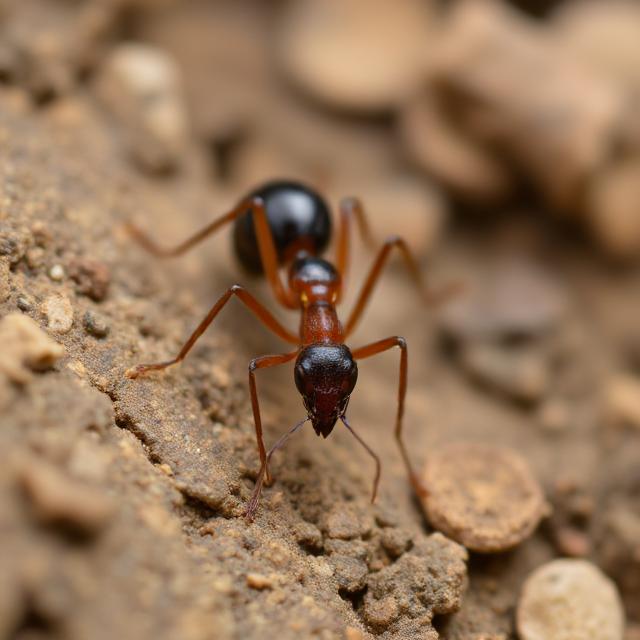🐜 Ant: General Overview
Ants are social insects known for their highly organized colonies, teamwork, and complex behavior. With over 14,000 known species (and possibly more undiscovered), they are found on every continent except Antarctica and play essential roles in ecosystems as decomposers, predators, seed dispersers, and soil aerators.

🔬 Classification
- Kingdom: Animalia
- Phylum: Arthropoda
- Class: Insecta
- Order: Hymenoptera
- Family: Formicidae
- Genera & Species: 300+ genera and 14,000+ described species (e.g., Formica, Solenopsis, Camponotus, Atta)
🧬 Physical Characteristics
- Size: 0.08 to 2 inches (2–50 mm), depending on species
- Color: Black, brown, red, yellow; some tropical species are green or metallic
- Body Structure: Three segments – head, thorax, abdomen; antennae and six legs
- Mandibles: Powerful jaws used for carrying, cutting, or fighting
- Caste System: Queens (reproductive), Workers (non-reproductive females), Males (drones)
🌎 Habitat
- Range: Nearly worldwide (excluding Antarctica)
- Habitats: Forests, deserts, grasslands, urban areas—almost any environment
- Nests: Built in soil, wood, under rocks, or in trees; some ants (e.g. weaver ants) build nests from leaves
- Supercolonies: Some species form massive colonies that stretch across continents
🍽️ Diet
- Type: Omnivores (diet varies widely by species)
- Common Foods: Insects, nectar, seeds, fungus, honeydew (from aphids)
- Specialists:
- Leafcutter ants grow fungus on chewed plant matter
- Army ants are carnivorous raiders
- Harvester ants collect and store seeds
🧠 Behavior
- Social Structure: Highly social; live in colonies from dozens to millions
- Communication: Pheromones (chemical trails), touch, and sound (stridulation)
- Division of Labor: Workers perform tasks like foraging, nursing, guarding, and nest maintenance
- Foraging: Some species follow scent trails to and from food sources
- Defensive Strategies: Biting, stinging (e.g., fire ants), chemical sprays (e.g., formic acid)
🍼 Reproduction
- Queens: Lay all the eggs; can live from a few years to decades
- Mating: Occurs in “nuptial flights”; males and queens mate mid-air
- Colony Formation: Fertilized queens start new colonies
- Development: Egg → larva → pupa → adult
- Caste Determination: Diet and hormones determine whether a larva becomes a worker or queen
🛡️ Conservation Status
- General Status: Most ant species are not endangered
- Threatened Species: Some rare or habitat-specific species are at risk due to deforestation, urbanization, and climate change
- Invasive Ants: Some species (e.g., Argentine ant, red imported fire ant) are invasive and pose ecological threats
🎉 Fun Facts
- Ants have existed for over 100 million years, dating back to the time of dinosaurs.
- The total biomass of ants on Earth is estimated to be comparable to that of humans.
- Bullet ants have the most painful sting of any insect (rated 4.0+ on the Schmidt Sting Pain Index).
- Weaver ants build nests by stitching leaves together using silk produced by their larvae.
- Some ants farm aphids for honeydew, much like humans farm cattle.
- Ant bridges and living rafts can be formed using only their bodies.